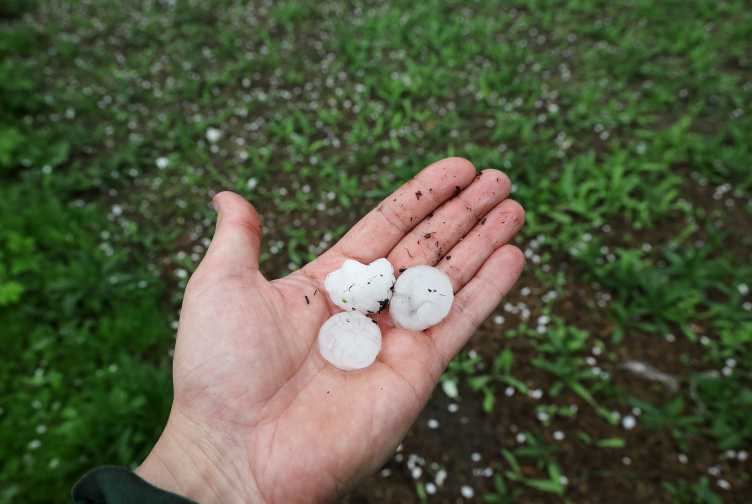C2SM Newsletter vol. 36
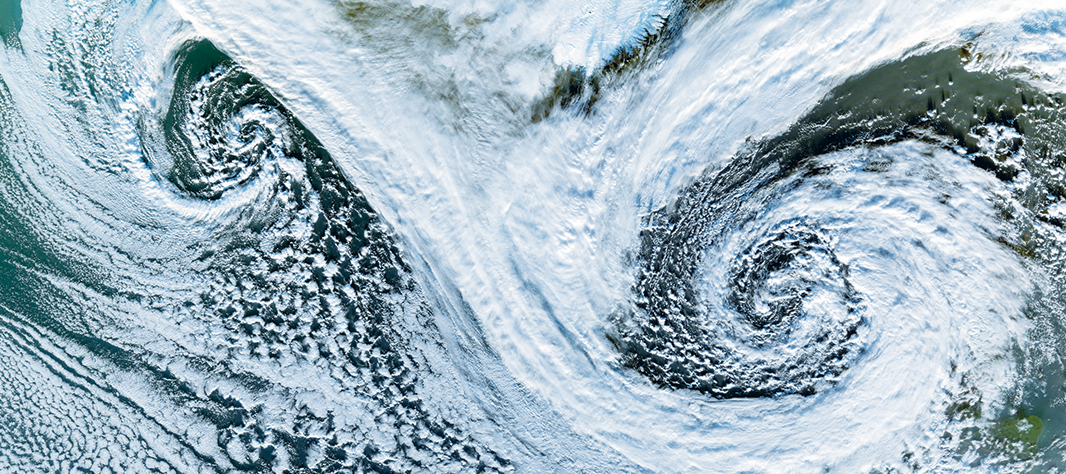
Topics in this Newsletter – March 2023
- News from the Steering Committee
- Modelling Activities and Services
- News from EXCLAIM
- News from Joint Activities on Climate Scenarios
- News from the C2SM Community
- Upcoming Events
- PhD Defenses
- Selected Press Articles
Highlighted papers in the C2SM Community
- Paper: Heat Extremes Driven by Amplification of Phase-Locked Circumglobal Waves Forced by Topography in an Idealized Atmospheric Model
- Paper: Detecting the human fingerprint in the West-Central European 2022 summer soil drought
- Paper: HORAYZON v1.2: An Efficient and Flexible Ray-Tracing Algorithm to Compute Horizon and Sky View Factor
- Paper: Application of the pseudo-global warming approach in a kilometer-resolution climate simulation of the tropics
- Paper: Global forestation and deforestation affect remote climate via adjusted atmosphere and ocean circulation
- Paper: Toward Eliminating the Decades-Old “Too Zonal and Too Equatorward” Storm-Track Bias in Climate Models
- Paper: Aerosol–cloud–precipitation interactions during a Saharan dust event – A summertime case-study from the Alps
News from the Steering Committee
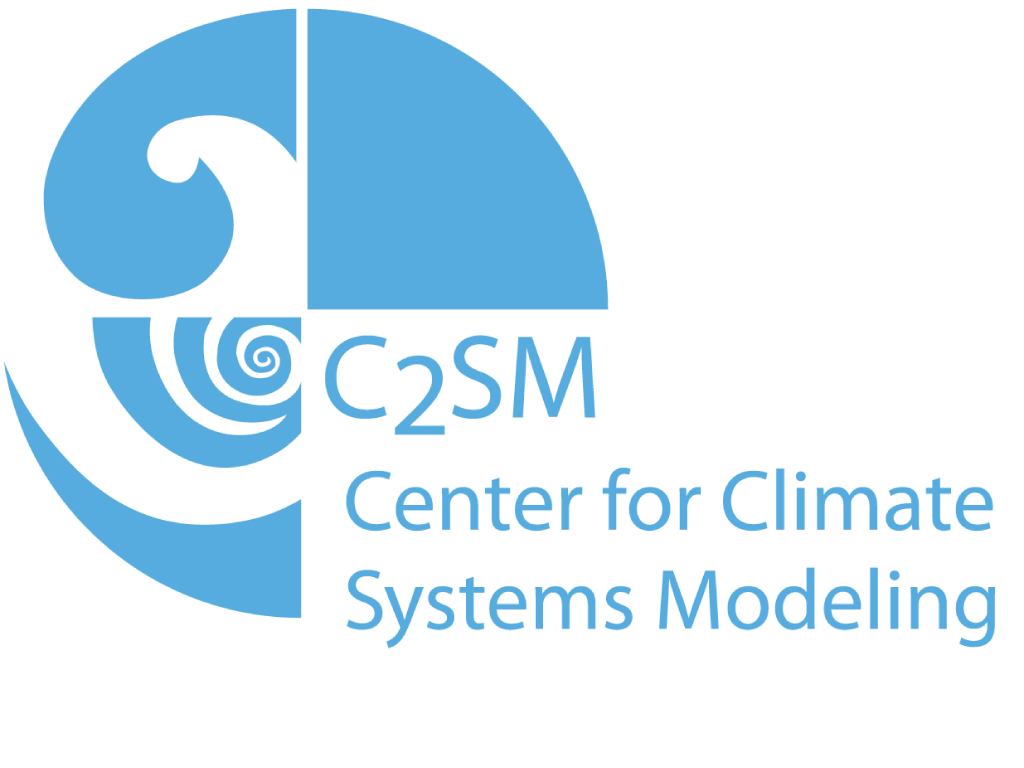
SPEED2ZERO and Klima CH2025 projects kicked off
The joint initiative SPEED2ZERO (Sustainable pathways towards net zero Switzerland) was kicked off on 13th March. The project’s goal is to contribute to halving greenhouse gas emissions by 2030, preparing the infrastructure needed to achieve this, building a resilient energy system, and safeguarding biodiversity. SPEED2ZERO aims to connect disciplines and institutions of the ETH Domain with private industry, government and policy, aiming to build a community of experts and stakeholders. The consortium is represented by ETH Zürich, external pageWSLcall_made, external pageEPFLcall_made, external pageEawagcall_made, external pagePSIcall_made,external pageEmpacall_made, and external pageSDSCcall_made, and is led by Prof. Reto Knutti, chairman of C2SM. The project is sponsored by the ETH Board. More information is available at the SPEED2ZERO website.
The kickoff meeting of the Klima CH2025 project took place on March 22nd at the Radisson Blu Hotel, Zurich Airport. In this project, MeteoSwiss and ETH Zurich together with further partners will deliver climate scenarios for Switzerland to the federal government by the end of the year 2025 in accordance with the national adaptation plan. The project teams of MeteoSwiss and ETH Zurich will set out work plans within several working groups and will begin creating an updated report from the CH2018 scenarios. The event has marked the beginning of seeking stakeholder input and collaborative input from the advisory board.
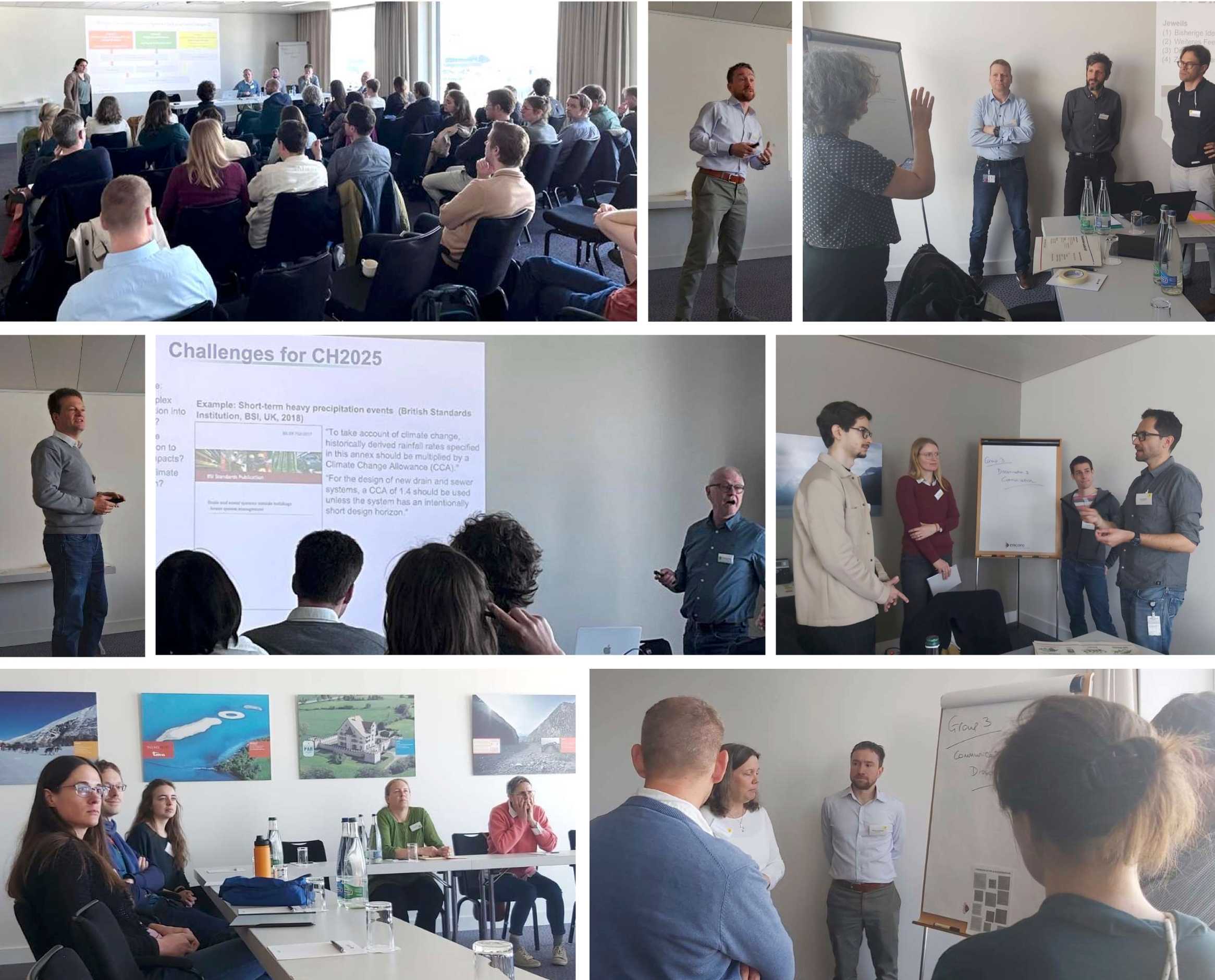
Modelling Activities and Services
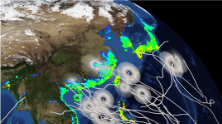
Working Group 1 (WG 1): High Performance Computing
GPU port of the three-dimensional turbulence scheme
To speed up the weather and climate model ICON (ICOsahedral Nonhydrostatic), its code is being ported to GPUs (graphics processing units). A significant part of the model has already been ported by MeteoSwiss and DWD (Deutscher Wetterdienst). One of the missing features included the three-dimensional turbulence scheme. This scheme has now been ported to GPUs by C2SM. The runtime of the scheme could thus be accelerated by a factor of 1.5.
Optimisation of the two-moment microphysics scheme for GPUs
The 2-moment cloud microphysics scheme of Seifert & Beheng (2006)* improves the representation of clouds and precipitation in weather and climate models. As part of a previous task, it has been adapted to run on GPUs, whereas the original code could only be run on CPUs (central processing units). The ported code has now been optimised for GPUs to run twice as fast as the original port. However, the runtime on GPUs lags behind the runtime on CPUs. This is due to the internal structure of the code, which is not advantageous for GPUs. In a future task, C2SM will therefore work on restructuring the code.
* Seifert, A., Beheng, K. A two-moment cloud microphysics parameterization for mixed-phase clouds. Part 1: Model description. Meteorol. Atmos. Phys. 92, 45–66 (2006). https://doi.org/10.1007/s00703-005-0112-4
Working Group 2 (WG 2): Development of Weather and Climate Models
Stable RBF interpolation
The ICON weather and climate model is being ported to GPUs, while the original model code can only be run on CPUs. To ensure that the model results are physically the same, the GPU simulations are being tested against references generated from CPU runs. Since CPU and GPU simulations cannot produce bit-identical results, the results are considered to be the same if they are within a tolerated range around a reference simulation, which is generated by multiple CPU simulations with perturbed input data. While these tests validate for those GPU simulations that use the same compiler and machine as the CPU runs, they fail on other machines and compilers even when comparing CPU to CPU simulations. This issue has been traced back to an unstable RBF (radial basis function) interpolation, which is used to interpolate the unstructured ICON grid to a rectangular grid and is executed during each simulation. We have implemented the option to store and load the coefficients, which are calculated in the RBF interpolation. This allows cross-machine and cross-compiler testing of ICON.
Working Group 3 (WG 3): Climate Scenarios
Three Master students are writing their master theses within the Klima CH2025 project, supervised together by the group of Christoph Schär (Patricio Velasquez, Christian Steger, Marie-Estelle Demory), Meteo Swiss (Jan Rajczak and Regula Mülchi) and C2SM (Ruth Lorenz). They are evaluating convection permitting climate model simulation data, which Ruth Lorenz from C2SM has been downloading and processing since last summer. The data is a multi-model ensemble of convection permitting regional climate model simulations produced during the EUCP project by Christoph Schär’s group and partners from all over Europe. The three topics of the theses are “Intensity and persistence of dry and warm spells in Switzerland” (Fabiana Chiriatti), “Elevation-dependent climate change signals in Switzerland” (Leandro Gimmi), and “Characteristics of the intensity and duration of high impact precipitation events in Switzerland” (Rebekka Estermann). One of the goals is to assess the usability of the data for Klima CH2025. Different model simulations are available as time slices of ~10 years, i.e., evaluation (2000-2009), historical (1996-2005), and two slices for RCP8.5, 2041-2050 and 2090-2099. So far, available (and checked) variables are hourly precipitation and temperature, and daily precipitation, temperature, maximum and minimum temperature. The dataset, which the students are using, is available at the Swiss National Supercomputing Centre (CSCS) and documented at our Wiki (CORDEX-FPSCONV data).
ICON-CLM in CORDEX setup
Within the framework of the EXCLAIM project, several use cases are being planned to demonstrate the efficiency of a new, accelerated and high-resolution version of the ICON model for application on GPUs , which is being developed within this project. One of them aims at producing regional climate simulations over Europe and use these simulations within the Klima CH2025 project. The necessary preparatory work has been completed, including the adaptation of the latest version of the official Starter Package for ICON-CLM Experiments (SPICE) by the Climate Limited-area Modelling (CLM) community for application on the supercomputer at CSCS. In addition, the GPU ports of several components important for CLM simulations have been completed. With the expertise of the Climate Evolution group at MeteoSwiss and the computing resources of the EXCLAIM project, a first evaluation run will be performed by the end of March 2023. Such a run is a prerequisite for any new CORDEX-type simulations and will be important to assess the quality of the GPU version of ICON in terms of climatology statistics. This simulation will be driven by ERA5 reanalysis data from 1979 onwards.
Working Group 4 (WG 4): Climate Impacts
As noted above, Eawag is a new member institution of C2SM. They are primarily involved in the impacts working group. We had a first meeting in January to get to know each other and to find out how C2SM could be most helpful to support climate-related research at Eawag. In fact, the needs are similar to others in the impacts community. Hence, standardised datasets, availability of climate data at single grid points or over well-defined areas such as Switzerland or hydrological Switzerland will be a key thing to provide. It became clear that many scientists in the impacts community are not used to work with climate model and observational data. The decision to add a “Climate model and climate data workshop” to the course portfolio of C2SM is a direct outcome of this meeting. This workshop will be planned and prepared for the first time in the next six months.
On the dataset side, C2SM core staff has started to download Copernicus European Regional ReAnalysis (CERRA) and CERRA-Land data from Climate Data Store ().
News from EXCLAIM

The EXCLAIM project (Extreme scale computing and data platform for cloud-resolving weather and climate modeling) aims to develop an ICON-model based infrastructure that is capable of running kilometre-scale climate simulations at both regional and global scales.
We are happy to welcome Dr. Praveen Kumar Pothapakula to our team. As a simulation expert, Dr. Pothapakula will work on testing the ICON-EXCLAIM model releases for the targeted scientific use cases and user support.
The first results from simulating Aquaplanet Using ICON With A GT4Py DSL Dynamical Core as well as performance evaluation of the ICON model at hectometric range over mountainous terrain were presented at the COSMO/ICON User Workshop in February 2023. You can find the presentations on the meeting website.
News from Joint Activities on Climate Scenarios
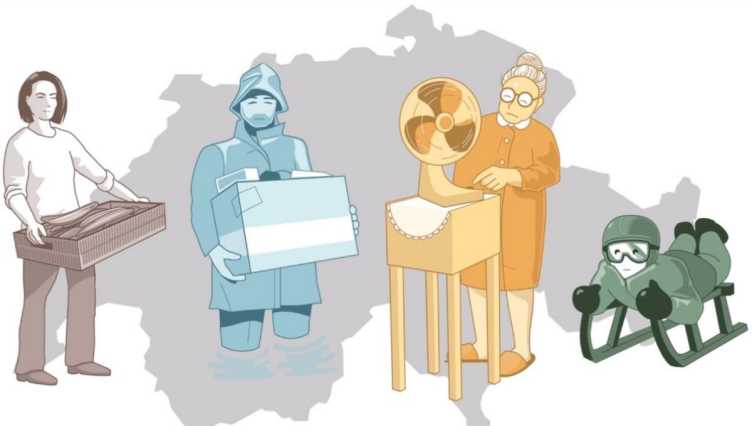
Refurbished CH2018 Technical Report available
An updated version of the CH2018 Technical Report is now available on the external pageNCCS CH2018 webpagecall_made. The update consists of minor editorial corrections and an improved figure quality. Furthermore the hyperlinks in the document (which did not work before) can now be used. The recommended citation remains valid. Thanks to the team at C2SM and MeteoSwiss that took care of the update!
News from the C2SM Community
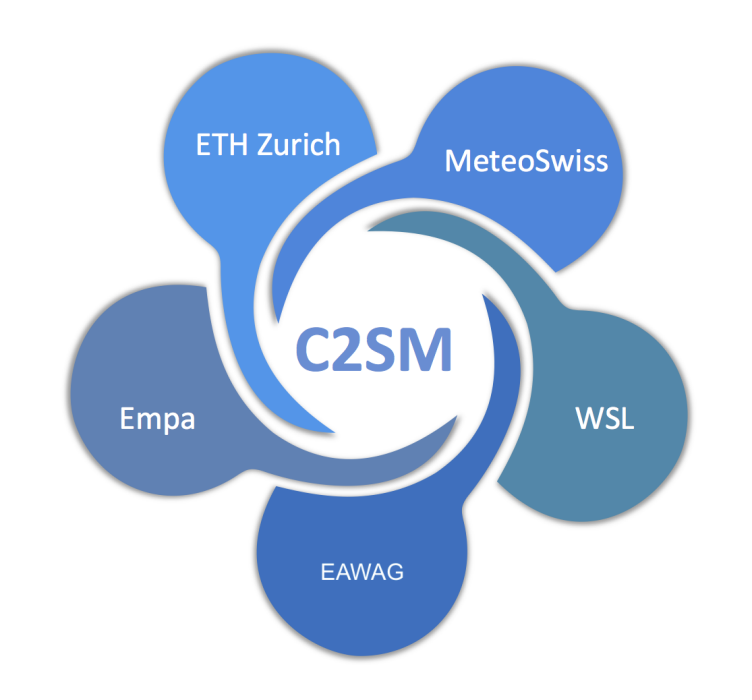
Congratulations to Lea Beusch, who received two awards for her PhD thesis "MESMER A Modular Earth System Model Emulator with Spatially Resolved Output"!
Her PhD thesis, performed in the group Prof. Sonia Seneviratne from C2SM, was awarded the ETH medal as well as the external pageACP award for Atmospheric Researchcall_made granted by the Atmospheric Chemistry and Physics Commission (ACP) of the Swiss Academy of Sciences (SCNAT).
In her thesis, Lea Beusch developed a new regional Earth System Model (ESM) emulator, the "Modular Earth System Model Emulator with spatially Resolved output (MESMER)", which is able to emulate grid-scale output from ESMs based on a given global temperature input. She demonstrated how MESMER can be used to recombine global and regional features of ESMs to cover a larger phase space with the emulator, potentially including observational constraints.

NCCS-Impacts programme: launch of projects and invitation to tender
In the NCCS programme «Decision Support for Dealing with Climate Change in Switzerland: a cross-sectoral approach» («NCCS-Impacts»), actionable climate services for the environment, economy and society will be developed. Between 2022 and 2025, several cross-sectoral and interlinked projects will be implemented, addressing the following topics in the context of climate change: global impacts, ecosystem services, human health and animal health, costs of climate change, socio-economic scenarios, and critical energy infrastructures. For four projects, a public invitation to tender was published in June 2022. The chosen consortia have started their project work in February 2023 in collaboration with NCCS-internal partners from ETH Zurich, WSL and others. More information on the projects and involved partners can be found on external pagewww.nccs.admin.ch/impacts-encall_made.
In March 2023, a new public tender will be published in relation to the project on socio-economic scenarios. The project will be carried out in close collaboration with WSL (Economics and Social Sciences Research Unit, Prof. Dr. Irmi Seidl). Detailed information about the content of the tender is available on the NCCS platform (external pagewww.nccs.admin.ch/impacts-encall_made) and through the pre-announcement via external pagewww.simap.chcall_made.
The Atmospheric Circulation group received a new collaborative ETH grant with D-MATH
In weather forecasting, ensemble data assimilation is commonly employed to derive the initial conditions for the numerical weather prediction model. In a new collaboration with the Seminar for Applied Mathematic (Prof. Misha Siddartha), the atmospheric circulation group (Prof. Sebastian Schemm) will explore how data assimilation, more generally how Bayesian inversion can be used to estimate unknown model parameters. Specifically, the teams target the Lilly-Smagorinsky subgrid-scale turbulence parameterization used in LES models. The project called “Machine learning-enhanced Bayesian inversion for improved subgrid-scale models in high-resolution weather and climate modeling” received funding via an ETH internal project grant and started in January 2023. Project website.
Extraordinary seminar: A physics-based approach to tropical cyclone risk assessment
5-16 Dec 2022, visit of Prof. em Kerry Emanuel, MIT, Cambridge, USA. Special seminar 6 December 2022
Almost all catastrophe (CAT) modeling today is based on statistical analysis of historical events. Some of this modeling is highly advanced – for example, most extant hurricane CAT models are based on a sophisticated bootstrapping of historical tropical cyclone tracks and intensity – but it all ultimately depends on the length and quality of this historical record and the assumption that the statistics are stationary. But for many weather-related hazards in much of the world, the historical record is woefully short and/or of poor quality, and the assumption of stationary statistics has been essentially obliterated by climate change that has already occurred. Given that climate change disproportionately affects the tails of risk distributions, it is likely that current estimates of the costliest potential events are far off the mark. For this reason, Kerry Emanuel advocates a fast migration toward physical modeling of weather-related risks and discussed recent progress toward this goal during the seminar. To transform the risk modeling industry, educational institutions need to quickly ramp up efforts to produce a new generation of graduates who are well versed in both physical modeling and the field of risk.
Upcoming Events

PROCLIAS cross-sectoral meeting and Summer School
The COST Action external pagePROCLIAS (COST PROCESS-BASED MODELS FOR CLIMATE IMPACT ATTRIBUTION ACROSS SECTORS)call_made will have the cross-sectoral meeting together with external pageISIMIPcall_made this June (5-8 of June 2023). The external pageagendacall_made is now out and although the external pageregistration period has ended we recommend contact the organizerscall_made as it is also possible to attend the event online.
Another event in the context of PROCLIAS COST Action is a very exciting Summer School targeted to PhD candidates and postdocs. The summer school is being organized jointly with two COST Actions: external page3DForEcoTechcall_made and external pageBottoms-upcall_made. The goal of the Summer School it is to focus on robust approaches to measure the current state, understand the processes and accurately predict the development of forest ecosystems. There are 40 places with funding available to cover the expenses. You can find more information on this Interdisciplinary summer school on forest ecosystems external pagein the announcement web pagecall_made. Please register before the 31st of March 2023. The summer school with take place in Ljubljana, Slovenia from the 10–14 July 2023.
The Forest Ecology group at ETHz is an active member in the PROCLIAS COST action and part of the organization committee of the summer school.
We congratulate our community members for their successfully completed PhDs!

- Christoph Heim. Simulation of Tropical Marine Clouds in Kilometer-Resolution Atmospheric Models. DISS. ETH Nr. 28817. Defended November 11, 2022
- Colin Tully: Cirrus Climate Intervention: Sensitivity Analysis Of Aerosol-Ice-Cloud Interactions. DISS. ETH Nr. 28900. Defended Dec 14, 2022
- Bernhard Enz: The Dynamical Tropopause Location as a Predictor for North Atlantic Tropical Cyclone Activity. DISS. ETH Nr. 29008. Defended Dec 20, 2022
Selected Press Articles

- Handelszeitung, external pageMassiver Rückbau für Autoscall_made, Prof. Kay Axhausen, 09.03.2023
- SRF 1, 10 vor 10: external pageDürre in der Schweiz, Italien und Frankreichcall_made, Prof. Manuela Brunner, 02.03.2023
- SRF 1, Tagesschau Hauptausgabe: external pageE-Autos als Stromspeichercall_made, Prof. Anthony Patt, 18.02.2023
- srf.ch, external pageKlimaerwärmung: Künstliche Intelligenz berechnet heisse Zukunftcall_made, Prof. Sonia Seneviratne, 16.02.2023
Highlighted Papers from the C2SM Community

Heat Extremes Driven by Amplification of Phase-Locked Circumglobal Waves Forced by Topography in an Idealized Atmospheric Model
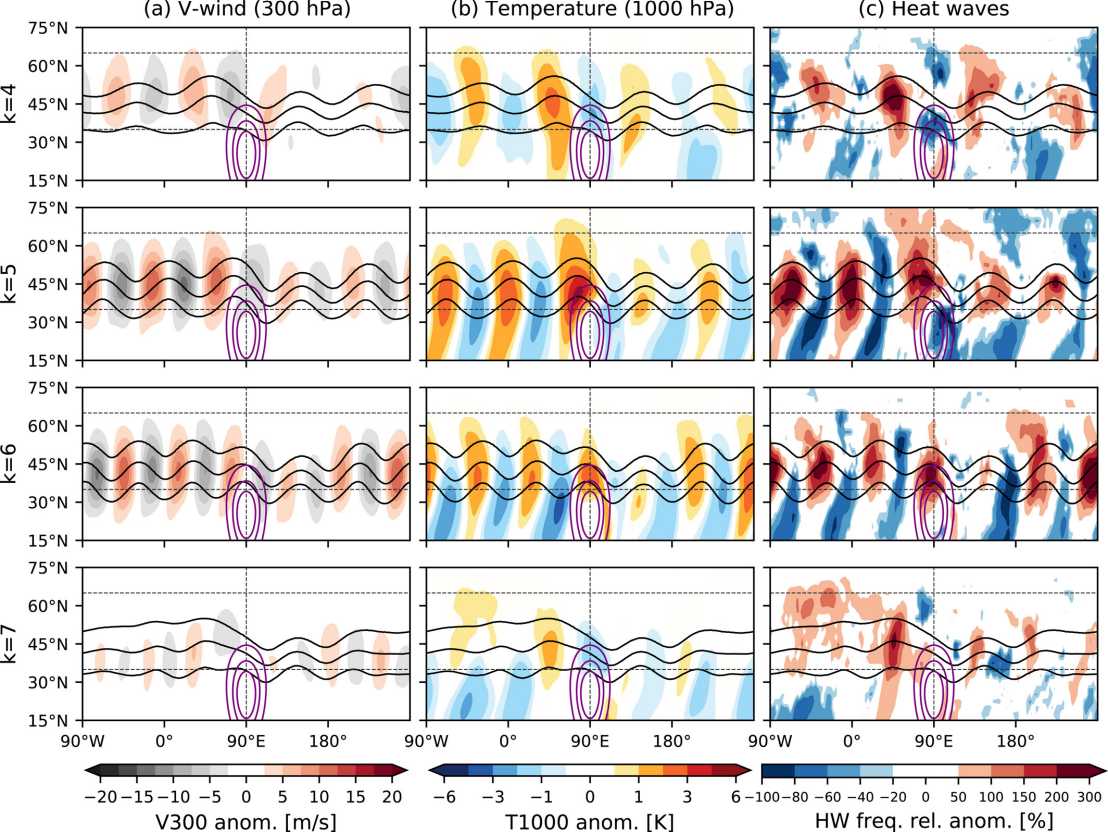
Heatwaves are persistent temperature extremes associated with devastating impacts on human societies and ecosystems. In the midlatitudes, amplified quasi-stationary Rossby waves have been identified as a key mechanism for heatwave occurrence. Amplified waves with preferred longitudinal locations lead to concurrent extremes in specific locations. It is therefore important to identify the essential components in the climate system that contribute to phase-locking of wave patterns. Here, we investigate the role of dry atmospheric dynamics and topography in causing concurrent heatwaves by using an idealized general circulation model. Topography is included in the model experiments as a Gaussian mountain. Our results show that amplified Rossby waves exhibit clear phase-locking behavior and a decrease in the zonal phase speed when a large-scale localized topographic forcing is imposed, leading to concurrent heat extremes at preferred locations.
Jiménez-Esteve, B., K. Kornhuber, and D.I.V. Domeisen (2022): Heat extremes driven by amplification of phase-locked circumglobal waves forced by topography in an idealized atmospheric model, Geophysical Research Letters, external pagehttps://doi.org/10.1029/2021GL096337call_made
Detecting the human fingerprint in the West-Central European 2022 summer soil drought

In many areas of West-Central Europe (highlighted in the map), soils in the 2022 summer were driest since at least 1950, while air temperatures were the hottest on record. Low root-zone soil moisture is an indicator of agro-ecological drought, and we found that under current climatic conditions such an event can be expected about every 20 years. However, today’s climate has already warmed by about 1.2 °C globally compared to pre-industrial times, while summertime root-zone soil moisture across West-Central Europe has been declining. Combining observation-driven datasets and climate model output and using the World Weather attribution methodology, we estimate that the risk of a 2022-like soil moisture drought has increased roughly 5-fold due to human-induced climate change. The downward tendency of summertime root-zone soil moisture in West-Central Europe is likely fuelled by strong regional warming, which in turn promotes evaporation and causes soil desiccation, whereas no clear signal emerges for precipitation. The resulting imbalance between moisture demand and supply makes severe summertime soil droughts more likely. With even more global warming, in a 2 °C world, a summer soil drought as severe as in 2022 — or worse — would become even more likely, and is expected to take place every 10 years.
Schumacher, D. L. et al., (in prep.). Rapid analysis (2022): external pagehttps://www.worldweatherattribution.org/high-temperatures-exacerbated-by-climate-change-made-2022-northern-hemisphere-droughts-more-likely/call_made
HORAYZON v1.2: An Efficient and Flexible Ray-Tracing Algorithm to Compute Horizon and Sky View Factor
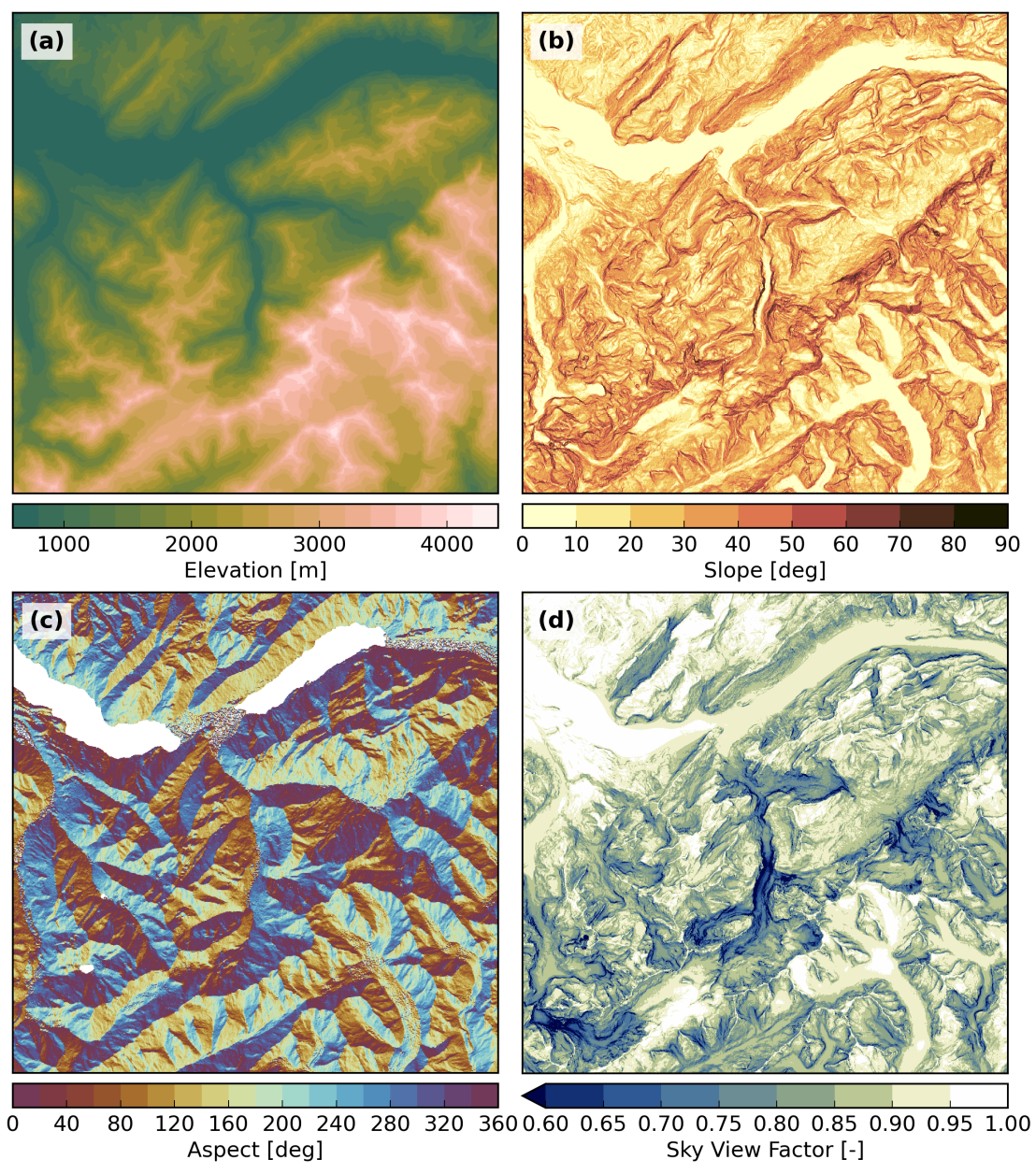
In areas with complex topography, incoming surface radiation is strongly influenced by terrain geometry: direct shortwave radiation depends on local surface inclination and neighbouring terrain (topographic shading). Diffuse shortwave and longwave radiation can be altered by partial sky obstruction and the reflectance or emission of radiation by surrounding terrain. All these effects are not explicitly represented in climate models and different parameterisations have thus been developed. The parameterisations typically depend on the terrain horizon and/or the sky view factor. These topographic parameters are strongly scale-dependent and should thus be computed from high-resolution elevation data, which is computationally expensive with conventional algorithms. We therefore developed a novel efficient and flexible method, which is based on a high-performance ray-tracing library. The resulting study has been selected as a highlight paper in GMD.
Steger, C. R., Steger, B., and Schär, C. (2022).: HORAYZON v1.2: an efficient and flexible ray-tracing algorithm to compute horizon and sky view factor, Geosci. Model Dev., 15, 6817–6840, external pagehttps://doi.org/10.5194/gmd-15-6817-2022call_made
Application of the pseudo-global warming approach in a kilometer-resolution climate simulation of the tropics
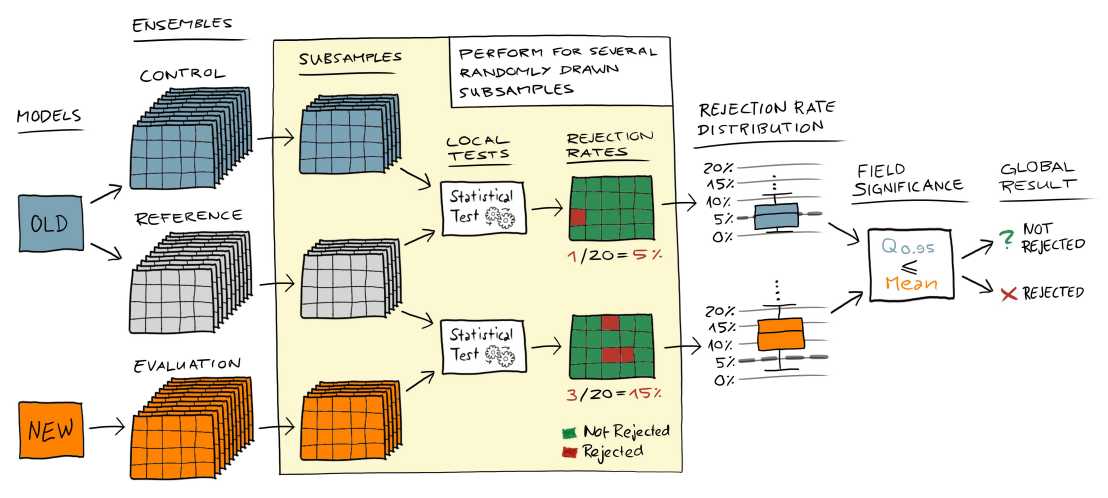
Tropical clouds are an important component of the climate system as they can either amplify or dampen human-induced climate change. However, predicting how clouds will change in a warming climate is challenging due to their small-scale nature. We perform high-resolution atmospheric climate simulations over the tropical Atlantic to study what we can learn about tropical clouds from this relatively novel type of models. We validate the simulation under current climate conditions and find a good representation of tropical clouds in comparison to coarser climate models. In particular, the high-resolution simulation does not suffer from the double intertropical convergence zone (ITCZ) problem commonly present in global climate models. We then study how tropical clouds will change in a warming climate and find differences between our high-resolution simulation and coarser climate simulations. The tropical overturning (Hadley) circulation weakens in both model types, but the narrowing of the ITCZ (known as the deep-tropics squeeze) is not so pronounced in the high-resolution simulation, likely due to the absence of a double ITCZ bias.
Heim, C., Leutwyler, D., & Schär, C., 2023: Application of the pseudo-global warming approach in a kilometer-resolution climate simulation of the tropics. J. Geophys. Res. Atmos., 128, e2022JD037958. external pagehttps://doi.org/10.1029/2022JD037958call_made
Global forestation and deforestation affect remote climate via adjusted atmosphere and ocean circulation
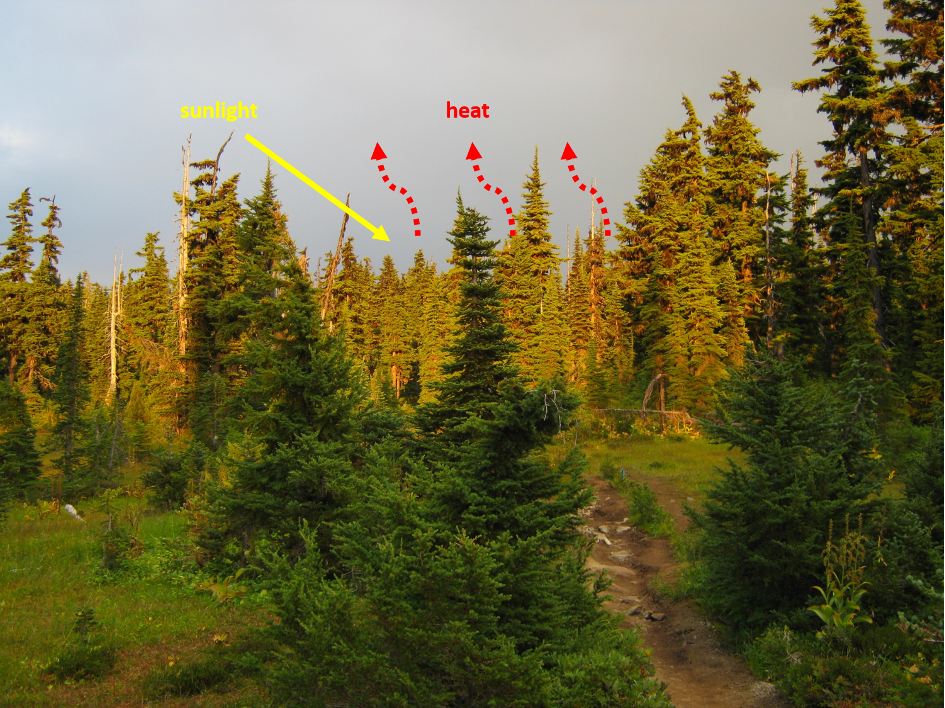
Forestation is considered an important measure against global warming because forests store large amounts of carbon. But it is often forgotten that forests are darker than grass surfaces, which means that a forest absorbs more solar radiation and releases it back into the atmosphere as heat. This is particularly the case in North America and Eurasia. There, forestation-induced warming has the potential to (partially) offset the cooling due to carbon storage, while for tropical forestation the cooling clearly dominates. Understanding the consequences of such biogeophysical changes to the land surface is important to ensure that forestation activities are not counterproductive.
Here we discuss how global-scale forestation and deforestation change the Earth’s energy balance, thereby affect the global atmospheric circulation and even have profound effects on the ocean circulation. We perform multicentury coupled climate model simulations in which preindustrial vegetation cover is either completely forested or deforested and carbon dioxide mixing ratio is kept constant. This means that we did not account for the carbon storage of forests but only considered effects related to changes in darkness, evaporation and roughness of the land surface. We show that global-scale forestation leads to a weakening and poleward shift of the Northern mid-latitude circulation, slows-down the Atlantic meridional overturning circulation, and affects the strength of the Hadley cell, whereas deforestation leads to reversed changes. Consequently, both land surface changes substantially affect regional precipitation, temperature, clouds, and surface wind patterns across the globe. The design process of large-scale forestation projects thus needs to take into account global circulation adjustments and their influence on remote climate.
Read more in our blog article: external pagehttps://go.nature.com/3BDI1Hmcall_made.
Portmann, R., Beyerle, U., Davin, E., Fischer M. E., de Hertog, S., Schemm, S. (2022) Global forestation and deforestation affect remote climate via adjusted atmosphere and ocean circulation. Nat Commun 13, 5569 external pagehttps://doi.org/10.1038/s41467-022-33279-9call_made
Toward Eliminating the Decades-Old “Too Zonal and Too Equatorward” Storm-Track Bias in Climate Models
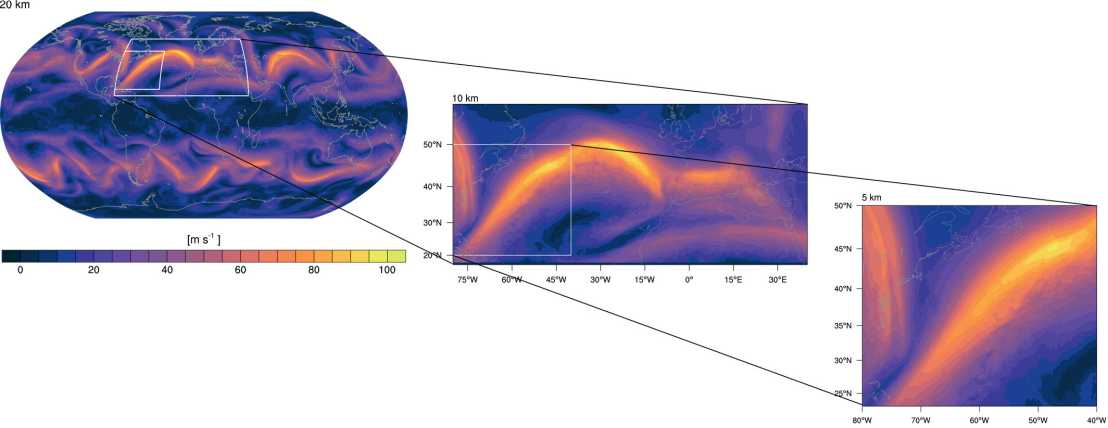
Most people in the mid-latitudes will experience climate change through changes in their daily weather. Much of the daily weather variability is determined by the propagation of extratropical low pressure systems. The direction of propagation of these systems dictates regional precipitation patterns, and an accurate representation of the track is important to reduce uncertainties in future projections. However, climate models simulate tracks that are too zonal (i.e., east–west), too close to the equator and too weak. Using an idealized simulation, this study shows that individual tracks will propagate more poleward, intensification rates will increase and the tracks become less zonal at storm-resolving model resolution, helping to reduce this well-known circulation bias in climate models.
Schemm, S. (2023). Toward eliminating the decades-old “too zonal and too equatorward” storm-track bias in climate models. Journal of Advances in Modeling Earth Systems, 15, e2022MS003482. external pagehttps://doi.org/10.1029/2022MS003482call_made
Aerosol–cloud–precipitation interactions during a Saharan dust event – A summertime case-study from the Alps

Changes in the ambient aerosol concentration are known to affect the microphysical properties of clouds. Especially regarding precipitation formation, increasing aerosol concentrations are assumed to delay the precipitation onset, but may increase precipitation rates via convective invigoration and orographic spillover further downstream. In this study, we analyse the effect of increased aerosol concentrations on a heavy precipitation event observed in summer 2017 over northeastern Switzerland, an event which was considerably underestimated by the operational weather forecast model. Preceding the precipitation event, Saharan dust was advected towards the Alps, which could have contributed to increased precipitation rates north of the Alpine ridge. To investigate the potential impact of the increased ambient aerosol concentrations on surface precipitation, we perform a series of sensitivity simulations using the Consortium for Small-scale Modeling (COSMO) model with different microphysical parametrizations and prognostic aerosol perturbations. The results show that the choice of the microphysical parametrization scheme in terms of a one- or two-moment scheme has the relatively largest impact on surface precipitation rates. In the one-moment scheme, surface precipitation is strongly reduced over the Alpine ridge and increased further downstream. Simulated changes in surface precipitation in response to aerosol perturbations remain smaller in contrast to the impact of the microphysics scheme. Elevated cloud condensation nuclei (CCN) concentrations lead to increased cloud water and decreased cloud ice mass, especially in regions of high convective activity south of the Alps. These altered cloud properties indeed increase surface precipitation further downstream, but the simulated change is too small to explain the observed heavy precipitation event. Additional ice-nucleating particles (INPs) increase cloud ice mass, but only trigger local changes in downstream surface precipitation. Thus, increased aerosol number concentrations during the Saharan dust outbreak are unlikely to have caused the heavy precipitation event in summer 2017.
Eirund, G.K., Drossaart van Dusseldorp, S., Brem, B.T., Dedekind, Z., Karrer, Y., Stoll, M., and Lohmann, U. (2022), Aerosol–cloud–precipitation interactions during a Saharan dust event – A summertime case-study from the Alps. Q. J. R. Meteorol. Soc., 1– 19, external pagedoi.org/10.1002/qj.4240call_made


